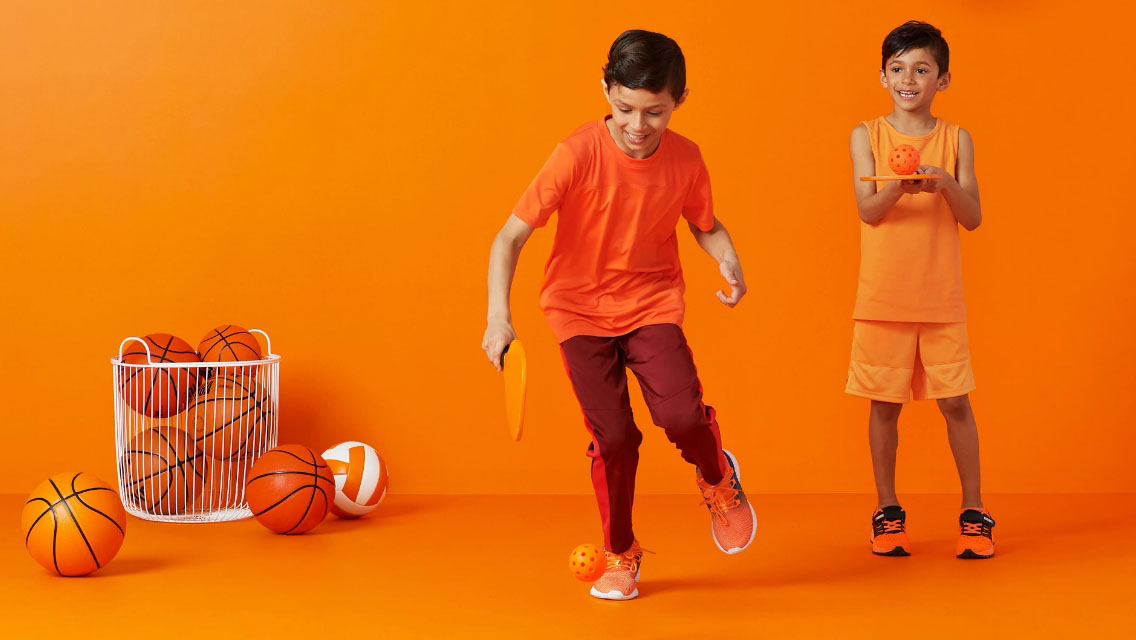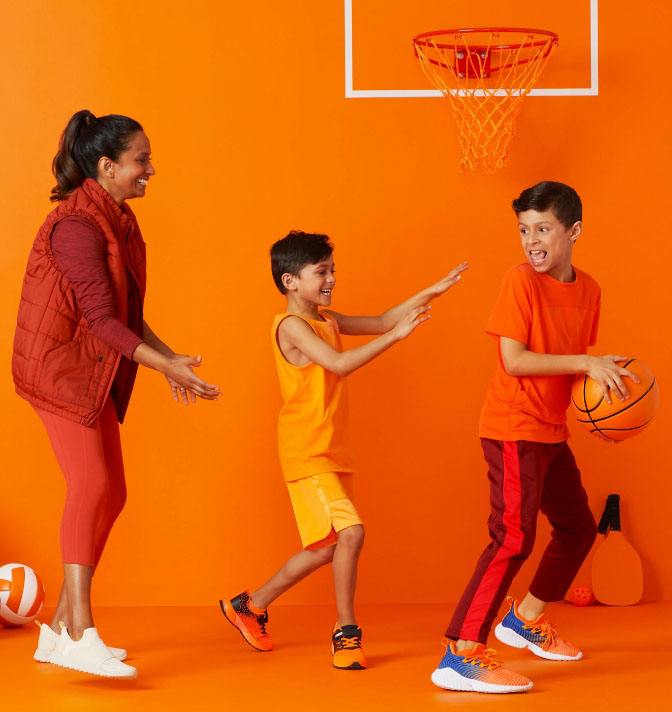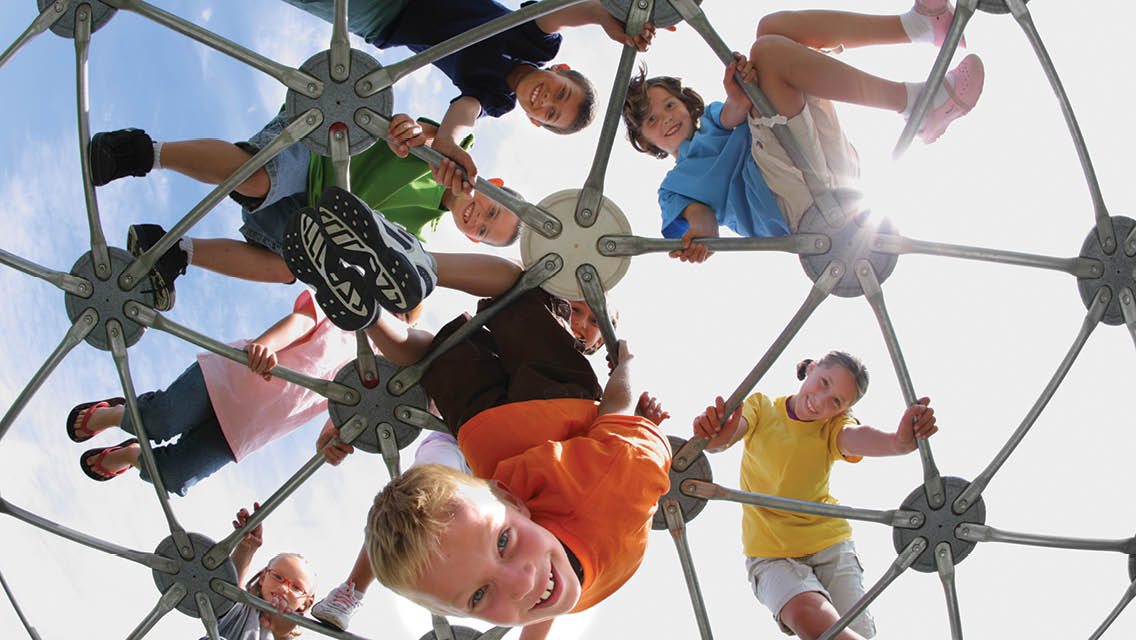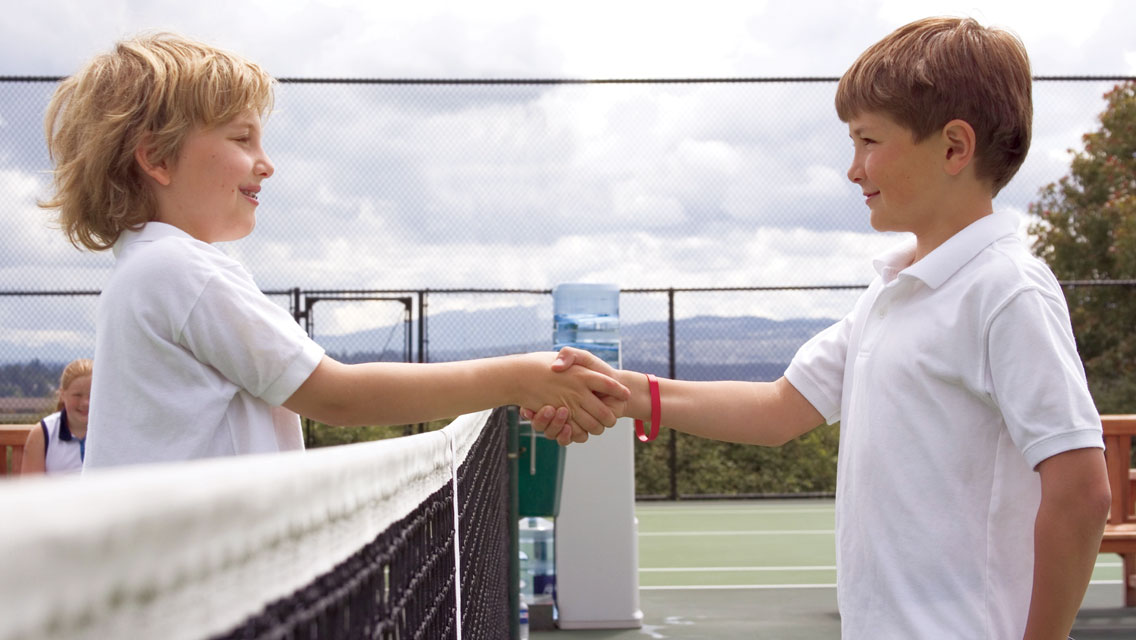Physical activity is crucial for kids and sports offer a great entry point for getting them moving early on — and keeping them engaged for the long term. Participation in youth sports can promote a lifetime of improved health and well-being, including physical, emotional, social, and cognitive benefits. These advantages — and the excitement of well-meaning parents — help fill the registration lists for many youth sports programs.
But what is the right age for your kids to start playing sports? And what is the ideal number of activities for them to be doing? The answers aren’t always clear, so we spoke with three sports experts to get their take on the best ways to engage kids when they’re young — and how to continue supporting their passions as they get older.
Our expert panel:
- Jen Rezac, director of kids and aquatics education for Life Time
- Ajay Pant, vice president of racquet sports for Life Time
- Diana Smigielski, senior manager of Ultimate Hoops training for Life Time
Life Time Editorial | What are the benefits of getting kids involved in sports at a young age?
Jen Rezac | Anytime we can keep kids moving, it’s a win. Active children are more likely to turn into active, healthy adults. But outside of this, sports help with basic life skills like following directions, socializing with other kids, and teamwork. It’s great for their coordination, too.
Ajay Pant | Sports teach basic, fundamental movements — running, throwing, catching, balance, agility, coordination — that help kids develop an athletic foundation and the desire to be active. And these skills are much easier to learn when you’re younger.
Each sport has its own specific benefits, too. For example, the unpredictable nature of tennis helps kids prepare to deal with real-life, unexpected, and uncomfortable situations.
Diana Smigielski | There are so many health benefits kids can reap from participating in sports at a young age, ranging from improved cardiovascular fitness and stronger muscles and bones to better social, mental, and emotional well-being. Starting them at a young age helps foster the importance of keeping their bodies moving.
Sports also provide kids the opportunity to work through challenging situations, as well as experience accomplishments that can boost their self-image and self-worth.
LTE | Are there extra benefits for joining a team sport?
DS | Team sports are awesome for building teamwork as a life skill. Team sports allow young athletes to work through problem solving and to be part of a group, which provides kids with a sense of belonging.
LTE | At what age should I start encouraging my child to try a sport?
JR | It depends on the sport and your child’s needs. For swimming, the earlier the better. At Life Time, we recommend starting swimming at 4 months old, as it teaches your child to be comfortable in the water.
I recommend waiting to join a competitive team until your child is in elementary school. The Mayo Clinic advises toddlers and preschoolers to focus on lessons and free play and to wait to start organized groups at age 6.
DS | You can start introducing different sports skills such as throwing, catching, and kicking as early as 6 to 12 months old. Around the age of 6, most kids are ready to participate in team sports. By this age, they’ve developed important motor skills and have the attention span needed to focus on the instructions.
It’s also important to remember it’s never too late to try a new sport. I started playing tennis in my late 20s and still enjoy playing competitively in leagues and tournaments today.
LTE | My child is really interested in a specific sport but struggling skill-wise. Do you have any advice?
JR | The reason they’re struggling could be as simple as they aren’t ready. Sometimes waiting another year can really help with motor skills or hand-eye coordination. Nothing beats “practice, practice, practice,” but remember to keep it fun.
For example, if your child is struggling to learn swim techniques and that’s all you focus on every time you go to the pool, they are quickly going to find it exhausting. Instead, try a healthy mix of fun and practice. Private lessons are also an option for your child to receive more attention catered to their individual needs.
DS | Let them know that it’s OK — and completely normal! — to struggle when learning a new sport, and that it often takes hours and hours of practice to get better. Focus on one skill at a time and break it down into steps or progressions. Look for instructional videos on the internet or set up weekly classes or private lessons with an experienced trainer.
LTE | My child is very talented in one specific sport — how do I keep them interested and avoid burnout?
AP | Talent is one thing, but what’s in your heart is most important. Have a conversation with your child around the time they reach the middle-school age and things start to become more competitive: “Are you willing and wanting to commit to this sport? I’ve seen you working hard, and you are getting really good.”
If they are ready to commit to the sport they love, start making short-term goals. At 14 years old, your child’s goal should not be to go pro.
And remember to keep the conversation going throughout the journey. The most important question is: “Are you having fun?” If the answer is “no,” stop. Let your child take a break or continue playing other sports they’re interested in.
LTE | How many sports should one child play?
AP | Until the age of about 9 years, I don’t care what sports kids are playing, as long as they’re playing something. This is the time where kids develop athletic skills, including balance, agility, and coordination. Once kids reach ages 10 to 12, you can narrow in on one to three sports that your child loves and wants to specialize in. For example, if they love gymnastics, that can be their focus.
DS | I’d say as many sports as they would like — that also make sense for your family considering any time and monetary commitments involved. Encourage them to try lots of different sports out. Who knows what they may learn they love!
If and when your kid is looking to compete at a higher level, it’s recommended they narrow down to focus on only a few sports, depending on what their goals are.
LTE | Are there any sports that complement each other?
AP | There are many sports that complement each other, and tennis is a great example. Its fundamental athletic movements can help with athletic development for just about any other sport.
DS | In my role I focus on basketball, which can complement a number of other sports. Basketball and soccer both involve endurance, quick footwork, the ability to read defenses, and having court or field awareness. Basketball can also complement track and field, tennis, football, and baseball due to the crossover in linear movements, jumping, agility, and speed. The latter three sports also encourage lateral movement and hand-eye coordination, which can be beneficial for basketball players too.





